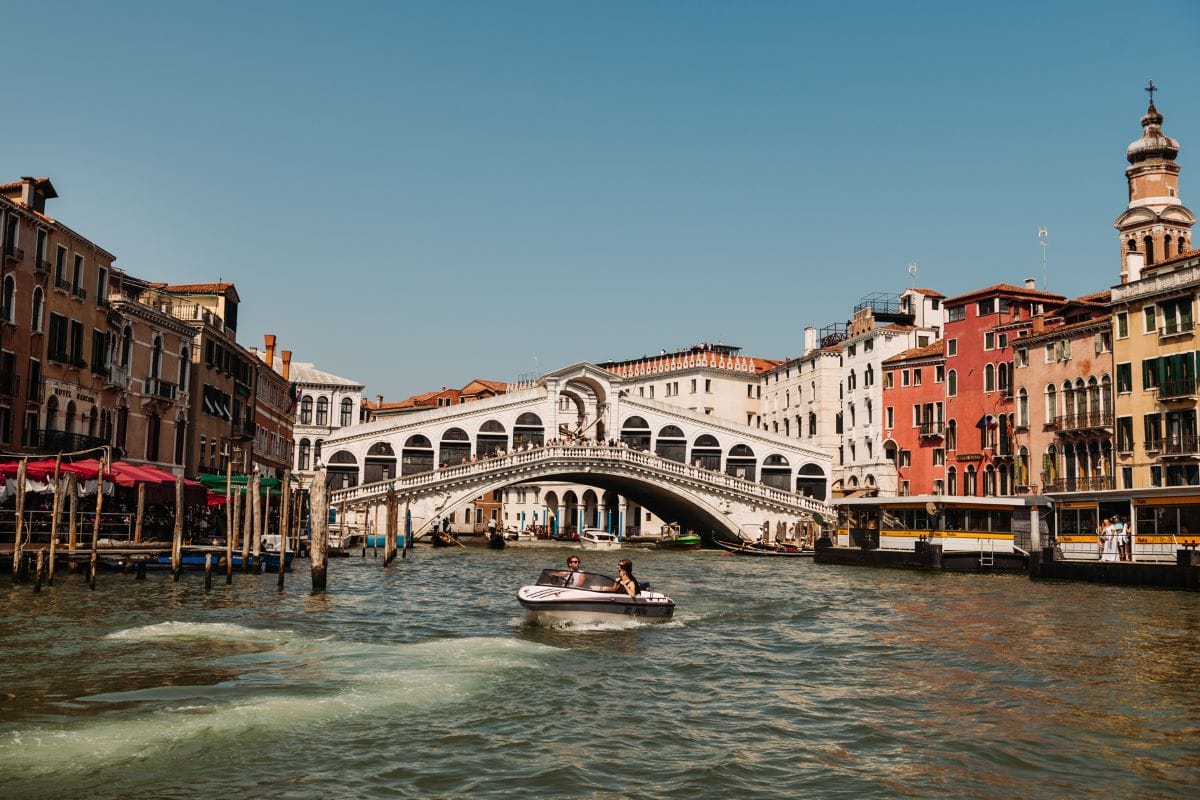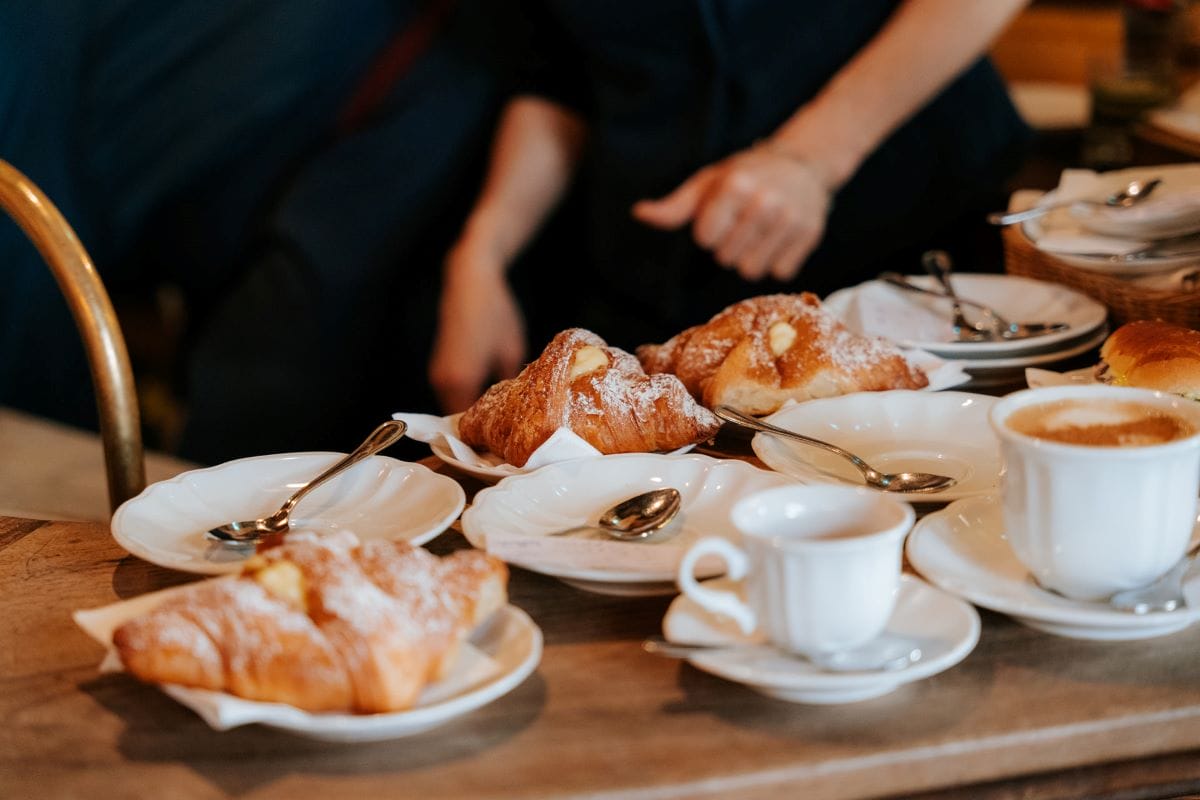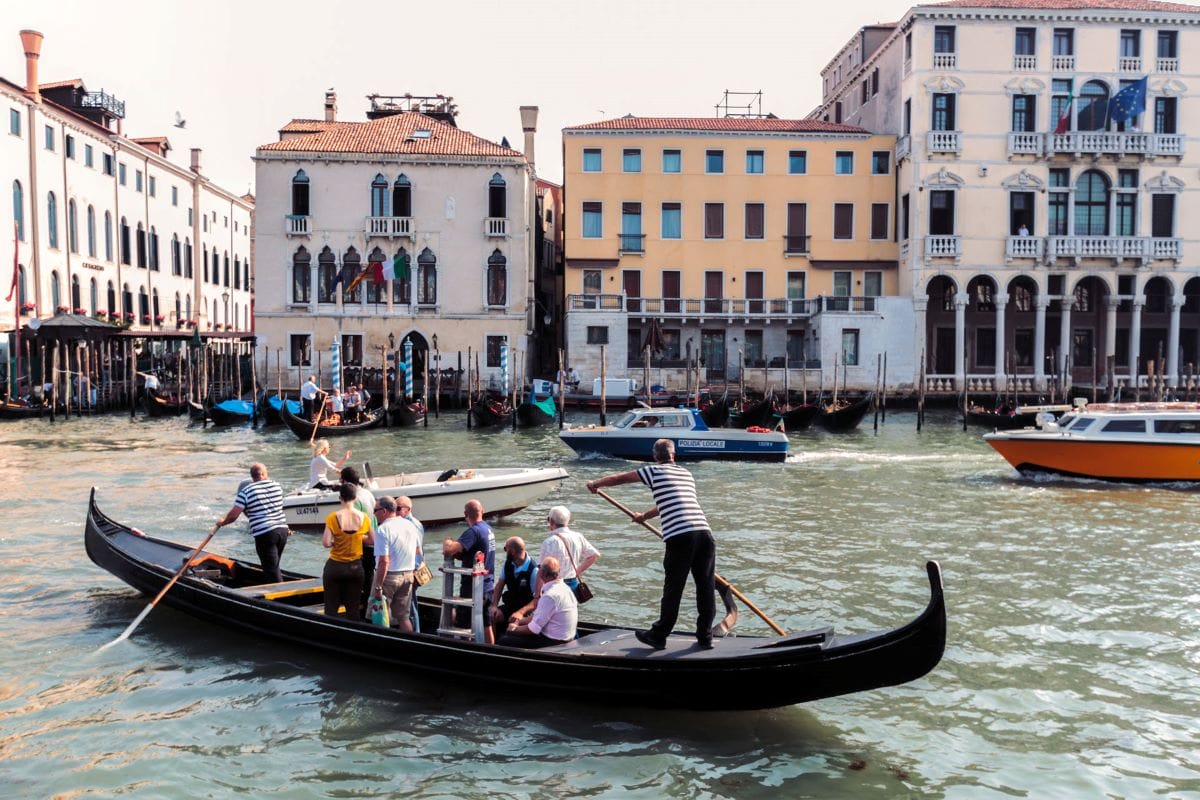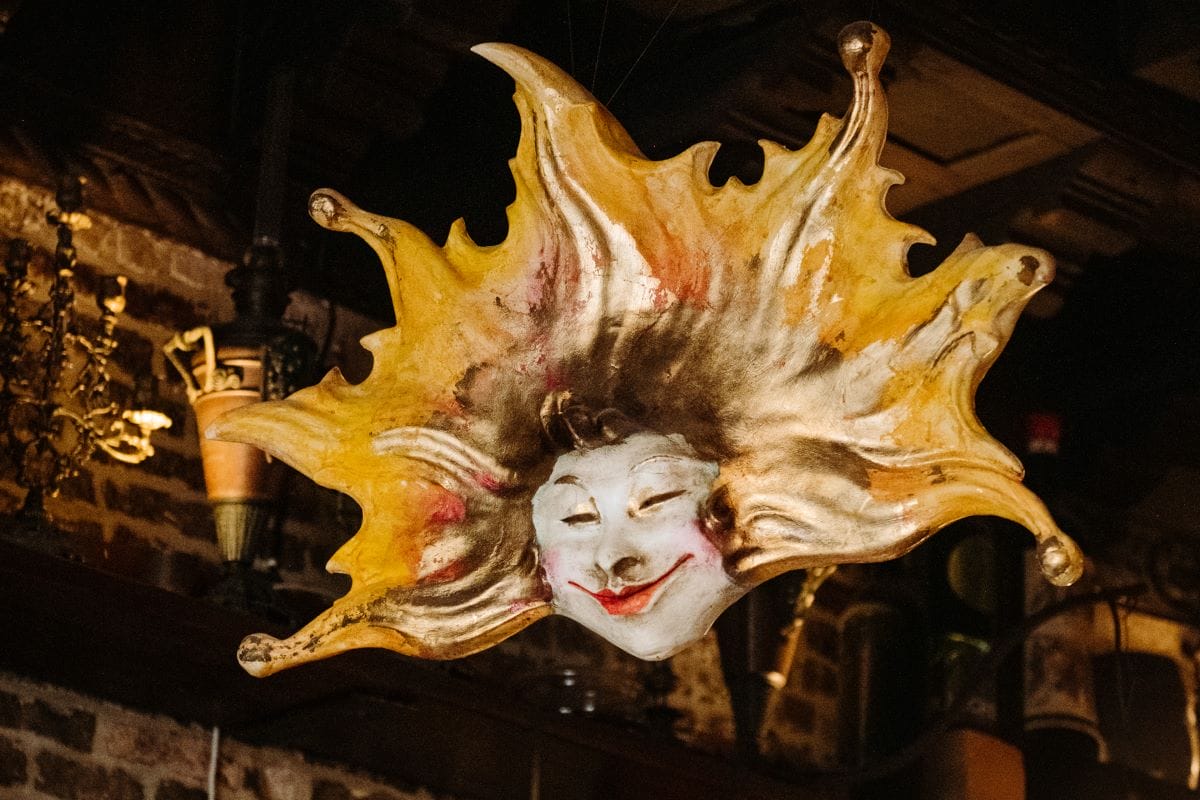
9 Fun Facts About Venice We Bet You Didn’t Know
July 10, 2025
Venice is a city that has fascinated many for centuries, a city completely man made, transformed into one of the most beautiful in Italy. Visitors come to wonder at the beautiful architecture and churches, to drift along the winding canals, to delight in a little spritz and cicchetti, to gaze at the stunning views over the Adriatic and the enchanting Venetian lagoon, and perhaps take part in a tour of Venice to see the famous sites, including the awe-inspiring St. Mark’s Basilica.
But how much do you know about this ancient city? We’ve collected a few of our favorite fun facts about Venice we bet you didn’t know! Read on to learn more about one of our favorite cities in Italy.

Table of Contents
ToggleVenice has its very own calendar!
Before the existence of the Gregorian calendar we all know today, the republic of Venice counted time a bit differently. This Venetian calendar resembled the ancient Roman one, which began the calendar year in March. This made sense as it marked the beginning of spring, a time for new rebirth.
Venetians called their calendar More Veneto, or “in the Venetian Manner.” The city kept this tradition much longer than you might expect. Many regions officially adopted the Gregorian calendar in the late 1500s; however, Venice continued to use its own until 1797!
If you take a look around, you might even see some dates marked by the old calendar. Just look for the symbol m.v.
Un caffè? Venice was the first in Italy to enjoy it!

That’s right, one of our favorite symbols of Italian culture first came through the canals of Venice.
In 1570, Prospero Alpini discovered coffee while traveling in Egypt on a trip for the Venetian Republic. Alpini became the first Italian to botanically register the plant and study the benefits of its beans.
However, coffee didn’t reach the table for another century, when the first “coffee shop” opened in St. Mark’s Square. Then in 1720, Caffè Florian opened, making it the oldest cafe in the city—another one of the fun facts about Venice you can share.
If you’re searching for the best coffee around Venice, we’ve got you covered.
Venice on film: The first moving camera shot in history…or was it?
On October 25, 1896, Jean Alexandre Louis Promio, a French filmmaker and photographer, started experimenting in Venice. He believed he was creating the first moving camera shot.
Nevertheless, he had been beaten! Just a few days earlier, director Girel actually filmed the first tracking shot along the Rhine River. Unfortunately, Promio didn’t learn the truth until later. The clip he filmed captured life on the Grand Canal and premiered in Lyon on December 13, 1897, under the title Panorama du Grand Canal pris d’un bateau.

A city built on sticks – Venice is held up by wood
Venice stuns with its architecture, but what’s even more impressive is that all those piazzas and palazzi stand above the water on thick wooden poles.
Let’s consider one of the most fascinating fun facts about Venice: The area where it lies was once thick, muddy swampland. Building a city here seemed impossible, so the first settlers constructed the city above the land and water.
The original Venetian lagoon was drained so Venetians could dig canals and install wooden logs as barriers. They then laid wooden platforms on top, which served as the base of Venice. The city has a layer of wood, then stone, then the streets you walk on.
However, due to this construction, Venice is, unfortunately, slowly sinking into the Adriatic Sea.

Venice is made up of 118 islands

The fish-shaped city we consider a single area actually consists of dozens of little islands. Greater Venice includes at least 118 islands in total, but this count includes nearby areas like Burano, Murano, and more.
You may find it impossible to visit all 118, but as you wander through the city you’ll touch down on a few. If you’d like to make a quick trip to somewhere new, here are a few of our favorite islands:
- Burano: The colorful fisherman’s island will brighten any day. The houses sport vibrant colors so fishermen returning home could see them, no matter the gray or stormy weather. The island also boasts incredible handmade lace.
- Murano: Famous for its glass making, Murano is a relaxed little island, perfect for a quick day trip from Venice. On Murano, you can learn what makes Murano glass so sought after and take a break from the crowds of Saint Mark’s Square.
- Lido di Venezia: If you love cinema, you may already know this island. It hosts the annual Venice Film Festival! When it isn’t welcoming international stars, it remains a popular beach spot for locals due to its sand beaches.
- San Michele: This island serves as the monumental cemetery of Venice. You’ll find the tombs of many well-known figures of history such as Igor Stravinsky and Ezra Pound.
Ever seen a woman gondoliere? There’s only one!

This honored profession in Venice has always passed from father to son. Venetians treasured this career, and for centuries, women never had the chance to try.
However, nearly a thousand years after the profession began, a gondolier had a single daughter, Giorgia Boscolo, and she pursued the career. So, in 2010, she became the official first, and only, female gondoliere.
While Giorgia is the only female to take you around in a gondola, other women in Venice participate in boating traditions in other ways, such as boat building.
Furthermore, whether you journey with Giorgia or another expert, a gondola ride along the canals is something everyone should experience at least once.
Those gorgeous Venetian masks used to be illegal!

Throughout the year, visitors love to grab a gorgeous local mask, especially during the Carnival season. These masks symbolize the city and its favorite celebration.
The tradition started in the 1200s, and over the centuries, it gained popularity. In the 1600s and 1700s, Venetians wore masks even more frequently. This trend bothered the local government, so they made a restriction: masks could only be worn between Christmas and Lent.
But why did masks become so popular around carnevale? Carnevale, the time before Lent, lets people get rowdy. The tradition still exists worldwide: whether indulging in sweets, having a little extra to drink, or dancing through the streets.
Historically, people used these masks to hide their identities when participating in activities the Church might not approve of. Now, this didn’t always mean criminal activity—more often, someone wore a mask when meeting with a lover. For that reason, among others, officials occasionally made masks illegal around Venice.
Ciao: The most famous Italian greeting came from Venice!
Many of us, even non-Italians, say ‘ciao’ when meeting friends. You may be surprised to learn that the saying originated in this city.
Venetians originally greeted each other by saying “s’ciavo” (think “shyavo”), meaning slave or servant. The Italian pronunciation would normally be “schiavo” (Skya-vo). The greeting essentially meant, “I am your servant”—much like saying “How may I help you?” or “At your service”.
At first, only lower classes used it to greet people in upper classes, but eventually, everyone started using it. Over time, the s and the v dropped off, and ciao became popular throughout northern Italy.
That lion in San Marco has more to say

You may notice the winged lion atop the column just off St. Mark’s Square. This lion, a symbol of St. Mark, became the symbol of Venice itself. Usually, you’ll see it with one paw on top of a book, supposedly the gospel.
If you look closely as you travel through the city and Veneto region, you’ll notice it changes. The book may be open or closed. When you see it open, it means Venice was at peace. When it’s closed, Venice was at war.
Additionally, legend claims it served as a symbol of taxation outside Venice: if the book was open, the city owed taxes to Venice; if closed, the town didn’t have to pay.
Frequently Asked Questions About Venice
What is the best way to explore the canals of Venice?
The best way to experience the iconic canals of Venice is by taking a traditional gondola ride. It’s a wonderful way to see the city from a unique vantage point, glide under historic bridges, and soak in the Venetian atmosphere. Alternatively, you can use the vaporetto (water bus) for a more budget-friendly option.
What makes Murano glass so special?
Murano glass stands out worldwide for its craftsmanship and vibrant colors. On the island of Murano in the Venetian lagoon, artisans produce this glass using centuries-old techniques. You can watch demonstrations and even purchase authentic pieces as souvenirs.
Which are the must-see landmarks in Venice?
No trip to Venice is complete without visiting the magnificent St. Mark’s Basilica, strolling across the Rialto Bridge, and exploring St. Mark’s Square. The Doge’s Palace and the labyrinth of canals throughout the city also deliver unforgettable experiences.
How is Venice protected from flooding?
Venice sits within the Venetian lagoon, making it vulnerable to high tides. Recently, the city implemented the MOSE project—movable barriers in the lagoon—to help protect against flooding during exceptionally high water (acqua alta).
Are there female gondoliers in Venice?
Yes, although the profession has traditionally been male-dominated, Venice welcomed its first official female gondolier, Giorgia Boscolo, in 2010. She continues to blaze a trail for women in this revered line of work.
There are, of course, many more fun facts about Venice you should discover. But we’ll leave it to you to visit the wonderful city, explore the hidden gems, and find out for yourself.
by Gina Mussio
View more by Gina ›Book a Tour

Pristine Sistine - The Chapel at its Best
€89
1794 reviews

Premium Colosseum Tour with Roman Forum Palatine Hill
€56
850 reviews

Pasta-Making Class: Cook, Dine Drink Wine with a Local Chef
€64
121 reviews

Crypts, Bones Catacombs: Underground Tour of Rome
€69
401 reviews

VIP Doge's Palace Secret Passages Tour
€79
18 reviews

Legendary Venice: St. Mark's Basilica, Terrace Doge's Palace
€69
286 reviews









